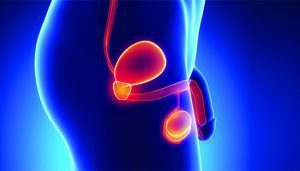Do you have the following symptoms?
• Frequent urination at night
• Frequent urination that often produces only a small amount of urine
• Hesitant or interrupted urine stream
• Leaking or dribbling urine
• Sudden and urgent need to urinate
• Weak urine stream
• Feeling like the bladder is not completely empty after urinating
• Occasional pain when urinating
• Having to rush to the bathroom suddenly after the urge to urinate
• Sometimes complete obstruction when severe
 You may be a candidate for a new minimally invasive procedure called Prostate artery embolization or PAE. This is a new treatment option for men with benign prostatic hyperplasia (BPH), also known enlarged prostate gland. This procedure can greatly reduce BPH symptoms.
You may be a candidate for a new minimally invasive procedure called Prostate artery embolization or PAE. This is a new treatment option for men with benign prostatic hyperplasia (BPH), also known enlarged prostate gland. This procedure can greatly reduce BPH symptoms.
This is a new minimally invasive alternative approach for patients who are not a surgical candidate or choose not to undergo a TURP or Prostatectomy. The benefits to this state of the art procedure are:
• Outpatient Procedure many patients return home after few hours
• Low risk of complications to the patient
• No associated risks of sexual dysfunction
• No associated risk of urinary incontinence
• High success rate
Our Vascular and Interventional Radiologist Craig Reiheld, MD combines his expertise of clinical and imaging based diagnosis with minimally invasive therapy. PAE (Prostate Artery Embolization) is a safe and effective alternative to TURP, Laser and Microwave therapies.
What should I expect during my PAE consultation?
Besides a history and physical examination, you will be asked to fill out a brief questionnaire to evaluate the severity of your symptoms. After this, you will meet with Dr. Reiheld and his team who will discuss your treatment options and pre-procedure tests. It’s important to note that patients will also need a referral from their urologist.
What tests may be needed prior to having
the procedure?
Upon assessment, the radiologist may order a variety of diagnostic testing as deemed appropriate. A blood test is also needed to ensure a safe procedure.
How is the procedure performed?
Similar to a heart catheterization, a very small tube is placed into the arteries that supply the prostate. Tiny particles are injected into the prostate arteries to decrease blood supply to the prostate, thus reducing its size and alleviating your symptoms.
Do I need to have general anesthesia for
the procedure?
Patients are given a sedative medication for the procedure, similar to that given for a colonoscopy which is often referred to as “twilight sleep.” There is no need for general anesthesia. The procedure is not considered painful and some patients elect to have no sedation.
To learn more about this exciting new procedure contact us today for your consultation at (941) 486-3491 and for more information visit our website www.RAVERAD.com, click on “Interventional Radiology” to learn more.
VENICE
512-516 S. Nokomis Ave
Venice, FL 34285
941-488-7781
Hours: 8:00am-5:00pm
ENGLEWOOD
900 Pine Street
Englewood, FL 34223
941-475-5471
Hours: 8:00am-5:00pm








